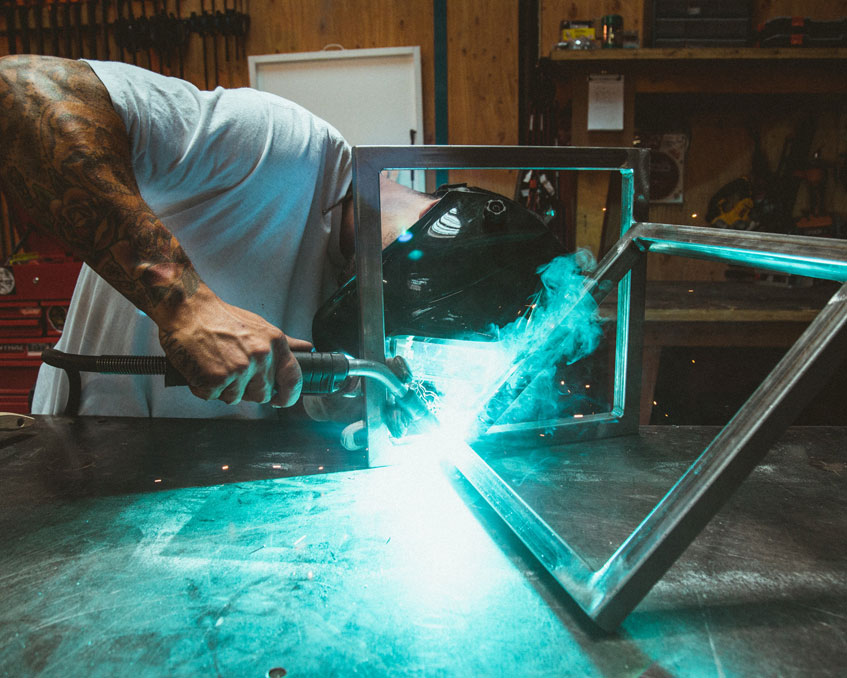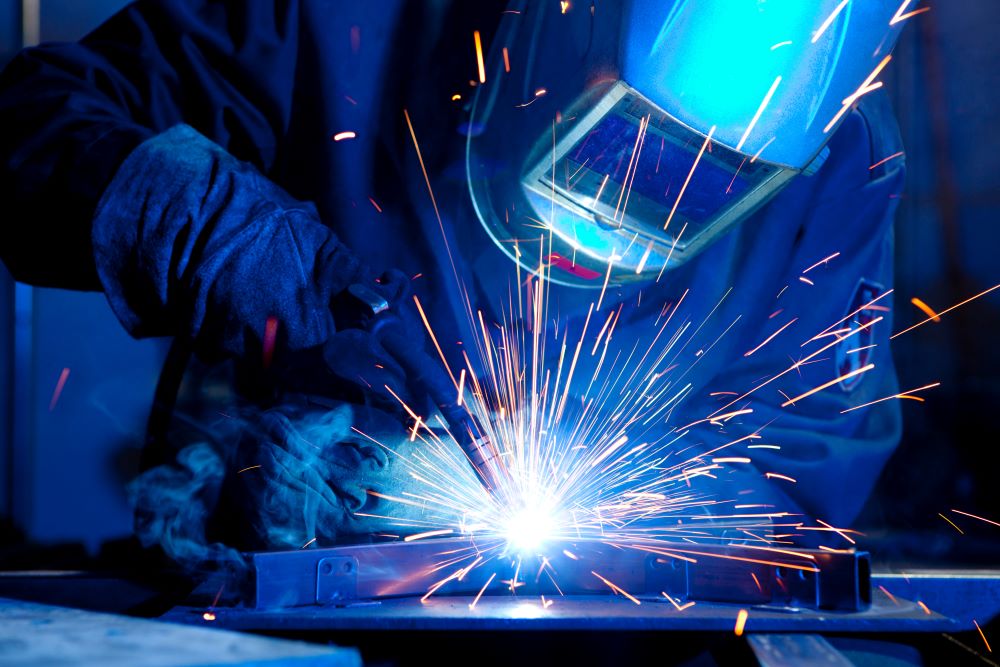All Concerning Welding: Key Insights Into Techniques and Best Practices for Success
Welding includes a variety of methods, each suited for particular materials and applications. Recognizing these techniques, such as GMAW, SMAW, and TIG, is necessary for attaining optimal outcomes. The right devices and safety and security techniques can not be neglected. As prep work and fixing play critical roles in the welding procedure, mastering these components can greatly improve the high quality of the final item. What are the crucial variables that assure a successful weld?
Understanding Different Welding Methods
Welding strategies encompass a range of techniques, each fit to details applications and materials. Among one of the most usual techniques are Gas Metal Arc Welding (GMAW), Shielded Steel Arc Welding (SMAW), and Tungsten Inert Gas Welding (TIG) GMAW, likewise referred to as MIG welding, is prominent for its speed and flexibility, making it suitable for slim materials. SMAW, or stick welding, is preferred for its simpleness and performance in outdoor settings, specifically with thicker steels. TIG welding provides accuracy and control, making it suitable for complex job and non-ferrous steels (Montana Mobile Welding and Repair Fabrication). Each strategy has its one-of-a-kind advantages and factors to consider, permitting welders to choose the very best method based on the project's requirements, product kind, and wanted results. Recognizing these methods is important for successful welding
Essential Welding Devices and Devices
While different welding methods require details abilities, the right tools and devices are equally important for accomplishing top quality outcomes. Essential welding tools includes welding makers, which vary depending upon the technique-- such as MIG, TIG, or stick welding. Protective equipment, including aprons, handwear covers, and safety helmets, guarantees security and convenience during the procedure. Additionally, clamps and fixtures aid protect products in position, making sure accuracy in welds. Consumables like welding poles, cable, and securing gas are likewise important parts that affect the high quality of the weld. Tools such as cutters and grinders assist in surface prep work and post-weld finishing, adding to an expert result. Investing in top quality tools eventually improves the efficiency and efficiency of welding projects.
Safety Practices in Welding
Correct security techniques are necessary in the welding industry to safeguard workers from potential dangers. Welders should put on appropriate individual safety devices (PPE), consisting of headgears with correct shading, gloves, and flame-resistant garments. Appropriate air flow is essential to decrease exposure to harmful fumes and gases generated throughout the welding process. Additionally, workers ought to be educated in the proper handling of welding tools to protect against mishaps. Fire precaution, such as maintaining flammable products away from the welding area and having fire extinguishers conveniently offered, are necessary. Regular examinations of equipment and workspaces can help recognize possible risks prior to they lead to accidents. By adhering to these safety practices, welders can create a safer working atmosphere and minimize dangers connected with their profession.
Readying Materials for Welding
Preparing products for welding is a vital action that substantially affects the quality and integrity of the end product (Montana Mobile Welding and Repair Welding). Appropriate prep work includes cleaning up the surface areas to get rid of impurities such as dust, oil, and corrosion, which can jeopardize the weld. Strategies such as grinding, sanding, or using solvents are generally utilized to accomplish a clean surface. In addition, guaranteeing that the materials fit together snugly is necessary; spaces can cause weak welds. It's additionally essential to consider the placement and positioning of the components, as this will certainly impact the ease of welding and the final end result. Choosing the appropriate filler product and ensuring compatibility with the base metals is essential for achieving solid, sturdy welds.
Tips for Getting High-Quality Welds
Achieving high-quality welds calls for focus to detail and adherence to finest practices throughout the welding process. Correct joint preparation is important, making sure surface areas are clean and cost-free from contaminants. Selecting the ideal filler material and welding strategy based on the base metals is crucial for suitable bonding. Preserving constant traveling rate and angle while welding can promote and avoid issues harmony. Furthermore, controlling warm input is crucial; too much heat can lead to bending and compromised joints. If essential, frequently examining the welds during the process allows for immediate modifications. Using ideal post-weld therapies, such as cleaning and tension relief, can improve the sturdiness and integrity of the weld, inevitably ensuring a successful end result.
Troubleshooting Usual Welding Issues
Welding usually provides challenges that can impact the top quality and honesty of the last product. Common problems such as porosity, inconsistent weld grains, and getting too hot can arise, each calling for details repairing techniques. Understanding these issues is necessary for welders to improve their abilities and achieve ideal outcomes.
Porosity Issues Clarified
Although porosity can typically be overlooked, it continues to be a vital concern in welding that can jeopardize the honesty of a completed product. Porosity describes the existence of tiny gas pockets within the weld bead, which can weaken the joint and lead to premature failing. This problem commonly develops from impurities, dampness, or improper protecting gas coverage during the welding process. To mitigate porosity, welders must verify that the base materials are clean and dry, use appropriate protecting gases, and keep regular welding specifications. Regularly inspecting the equipment and setting can likewise help recognize prospective problems before they materialize in the weld. Resolving porosity effectively is important for achieving solid, long lasting welds that satisfy high quality standards.

Inconsistent Weld Beans
Irregular weld grains can substantially influence the quality and strength of a finished product. Numerous factors add to this issue, consisting of improper travel rate, wrong amperage settings, and irregular electrode angles. When the welder moves too promptly, a grain might appear slim and lack infiltration, while relocating too gradually can trigger extreme accumulation. In addition, using the incorrect amperage can result in either undercutting or excessive spatter, both of which compromise weld stability. The welder's technique, such as inconsistent torch motion, can likewise cause unequal bead look. To minimize these problems, welders need to focus on maintaining stable, controlled activities and guaranteeing appropriate equipment settings to achieve uniformity in their welds. Consistency is essential to attaining strong and reliable welds.
Getting Too Hot and Bending Issues
Excessive warm throughout the welding procedure can cause substantial overheating and buckling concerns, influencing the structural integrity of the work surface. These issues usually show up check here as distortion, which can endanger placement and fit-up, making further setting up challenging. Elements adding to overheating consist of the selection of welding specifications, such as voltage and travel speed, in addition to the type of product being welded. To minimize these problems, welders should preserve constant travel rate and suitable heat input while monitoring the work surface temperature. Additionally, pre-heating or post-weld heat treatment can assist relieve stresses triggered by quick cooling - Welding. Regular evaluation and adherence to ideal practices are crucial in preventing overheating and making sure the long life and reliability of bonded frameworks
Regularly Asked Questions
What Are the Profession Opportunities in the Welding Sector?
The welding market provides varied job chances, including positions as welders, assessors, educators, and designers. Professionals can work in production, construction, aerospace, and automotive sectors, profiting from strong demand and affordable incomes in various duties.
Just How Can I Boost My Welding Rate Without Sacrificing High Quality?
To enhance welding speed without giving up quality, one must practice efficient strategies, preserve devices, enhance settings, and boost hand-eye sychronisation. Regular training and looking for responses can also substantially contribute to attaining faster, high-grade welds.
What Certifications Are Available for Welders?
Numerous qualifications exist for welders, including those from the American Welding Society (AWS), the National Center for Building And Construction Education and Study (NCCER), and different industry-specific companies. These qualifications boost employability and demonstrate skill effectiveness.
How Does Welding Impact the Properties of Metals?
Welding influences the homes of steels by altering their microstructure, which can cause adjustments in toughness, hardness, and ductility. Warm input and cooling prices during the procedure significantly impact these material characteristics.
Can I Bonded Dissimilar Metals With Each Other?
